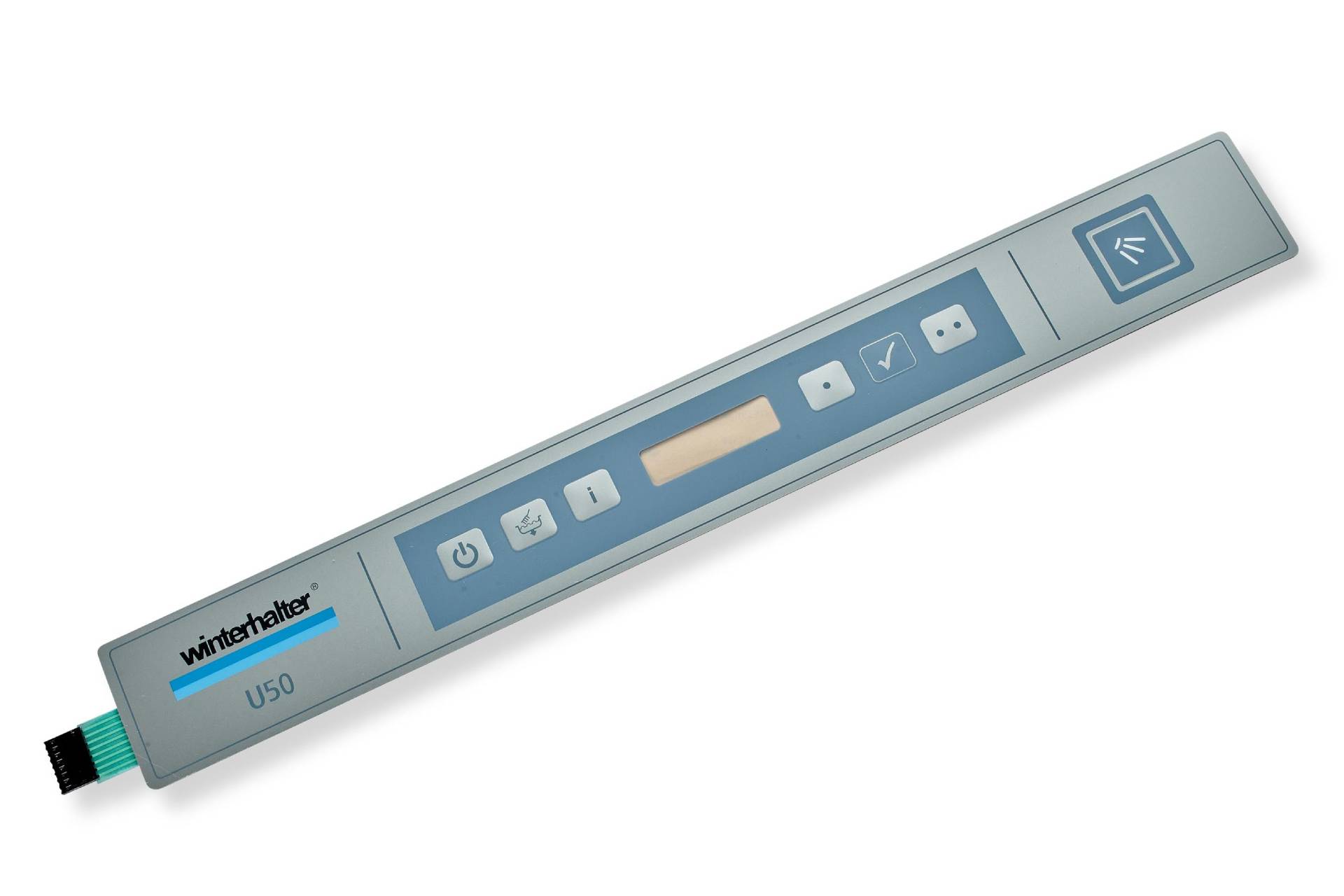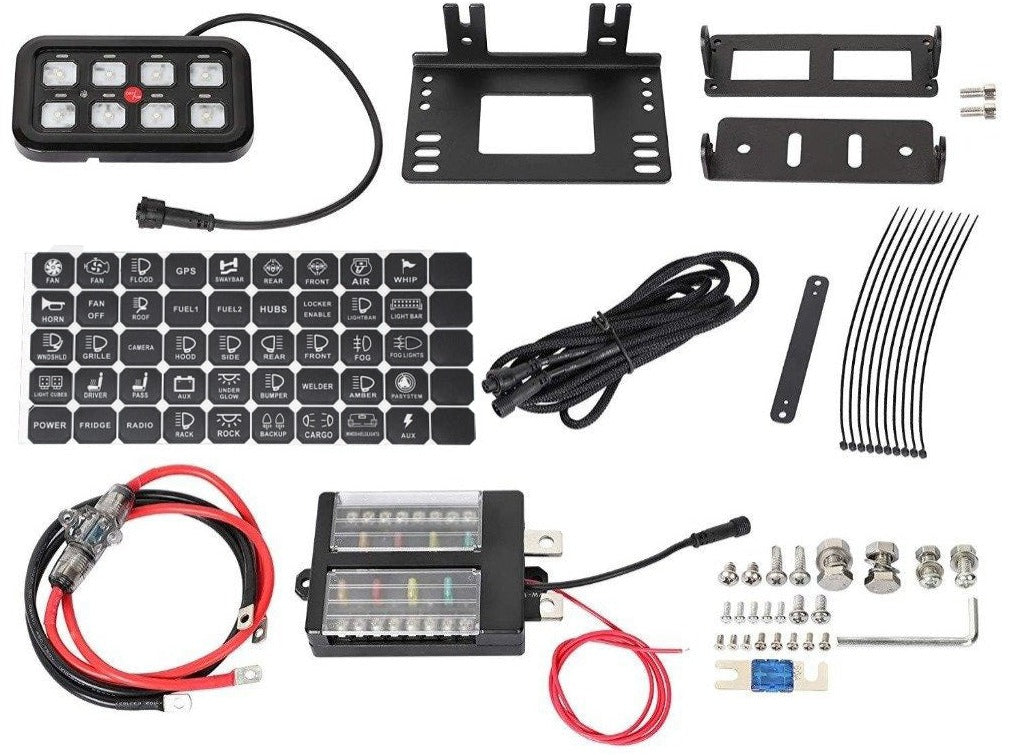Switch Backlighting Design Trends Defining the Future of Devices
Understanding the Perks and Significance of Switch Backlighting in Interface
Switch backlighting acts as a necessary element in user interface design. It enhances exposure, particularly in poorly lit atmospheres, and help in the navigation of gadgets for all customers. This function not just cultivates individual self-confidence however additionally promotes inclusivity for those with aesthetic disabilities. As innovation advances, the ramifications of switch backlighting proceed to expand. Comprehending its complex benefits may expose deeper insights right into its role in contemporary device interaction.
The Function of Switch Backlighting in Individual Interfaces
Switch backlighting offers an essential function in individual interfaces, enhancing both functionality and ease of access. It gives aesthetic feedback to individuals, suggesting the condition and performance of numerous controls. This feature aids users rapidly recognize energetic or non-active switches, promoting efficient interaction. By brightening the controls, backlighting minimizes the likelihood of mistakes, as individuals can conveniently determine their options.
Additionally, Switch backlighting contributes to a cohesive style aesthetic, typically integrating effortlessly right into the overall look of the interface. It allows designers to develop instinctive experiences that guide individuals with facility systems. Backlighting can be customized, making it possible for makers to line up shades and intensities with brand name identities, additionally improving individual interaction.
In atmospheres where user focus is split, the quality offered by switch backlighting comes to be a lot more substantial. Generally, this function plays a crucial function in making sure that interface are both practical and visually enticing.
Enhancing Exposure in Low-Light Conditions
Just how can individual interfaces effectively preserve functionality in low-light conditions? One important approach is through the execution of switch backlighting. This attribute improves the exposure of controls and indicators in dim environments, making sure individuals can communicate with gadgets without stressing their eyes or presuming the performance of various aspects. By lighting up switches, backlighting provides a clear aesthetic hint, minimizing errors and boosting customer self-confidence when steering with interfaces.

In addition, the critical use color and intensity in backlighting can help individuals in comparing different features and standings, additionally boosting use. Reliable backlighting not only adds to an aesthetically pleasing style yet additionally promotes safety, particularly in scenarios where quick reactions are needed. In conclusion, switch backlighting is an essential element that substantially enhances presence and performance of user interfaces in low-light problems, assisting in a seamless customer experience.
Improving Ease Of Access for All Users
Improving access in customer interfaces involves enhancing visual clarity to fit diverse customer needs. Reliable backlighting not only advantages nighttime functionality however additionally plays a vital function in making certain ample shade comparison for those with visual disabilities. By focusing on these aspects, developers can produce a lot more user-friendly and inclusive settings for all individuals.

Improved Aesthetic Clarity
Clarity in aesthetic style plays a crucial duty in ensuring that interface are available to everyone, no matter their abilities. Switch backlighting considerably boosts aesthetic clearness by offering clear visual cues that assist customers in interacting with user interface components. This attribute is especially useful for individuals with aesthetic problems, as it helps them compare various controls and their states. Backlighting can minimize cognitive tons by making info easier to process. Customers can promptly identify active switches or buttons, facilitating smoother navigating and communication. By incorporating switch backlighting, developers advertise inclusivity and use, permitting all customers to involve with innovation successfully. Ultimately, boosted visual clearness via backlighting fosters a much more user-friendly experience throughout varied customer teams.
Evening Functionality Advantages
Switch backlighting not only enhances aesthetic clearness however additionally provides substantial advantages for nighttime functionality, making user interfaces a lot more easily accessible for all users. This function is particularly valuable in low-light environments, where typical screens might be illegible. The illumination supplied by backlit switches allows users to interact with devices without stressing their eyes or interrupting their environments. Additionally, it sustains users with aesthetic impairments by supplying essential cues in dark setups. Consequently, switch backlighting contributes to a more comprehensive experience, fitting varying levels of aesthetic capability and ensuring that all users can browse user interfaces properly, despite the time of day. Eventually, this functionality fosters an extra straightforward environment for every person.
Shade Comparison Considerations
Shade comparison plays a vital role in enhancing availability within customer interfaces. High-contrast layouts assure that customers, consisting of those with aesthetic impairments and color blindness, can easily compare various aspects. This is specifically essential for switch backlighting, as reliable comparison aids users recognize energetic versus non-active states of switches. Executing proper color combinations-- such as light message on dark histories or the other way around-- improves readability and individual experience. On top of that, adherence to developed comparison proportion guidelines, such as the Internet Web Content Access Standards (WCAG), promotes inclusivity. By prioritizing shade comparison, designers can create interfaces that accommodate varied users, enabling for more effective and instinctive communication with innovation. Ultimately, thoughtful color options boost usability for all individuals, promoting an inclusive electronic atmosphere.
Developing an Immersive Video Gaming Experience
In the domain of pc gaming, improved aesthetic signs can considerably boost player involvement and communication with the environment. By using dynamic ambience development through switch backlighting, programmers can craft immersive experiences that react to in-game actions. This combination not only captivates gamers but likewise deepens their psychological link to the game globe.
Improved Aesthetic Hints
Boosted visual hints play a crucial function in developing an immersive gaming experience, allowing gamers to involve more deeply with the virtual environment. Switch backlighting can boost these signs by lighting up controls, making them conveniently identifiable during gameplay. This attribute not only help in navigation but likewise reinforces the thematic and psychological aspects of the video game. For example, various shades or intensities can indicate different activities or states, supplying immediate comments to players. Such visual indications can improve situational recognition, helping players make fast decisions. Additionally, backlighting can add to the total aesthetic, balancing with the video game's layout and story. By doing this, boosted visual signs elevate player experience, cultivating a stronger link to the game world.
Dynamic Environment Production
Switch backlighting not just boosts visual signs yet likewise plays a significant duty in dynamic ambience development within video gaming settings. By adapting to in-game events, these lit up buttons can enhance the overall immersion and emotional impact of gameplay. During intense battles, red backlighting might increase tension, while comforting blue colors can produce a sense of view website calm throughout expedition phases. This receptive illumination adds to a more engaging user experience, enabling gamers to feel even more connected to their digital surroundings. Furthermore, personalized backlighting alternatives enable gamers to individualize their interfaces, further enhancing their gaming experience. This way, switch backlighting serves as a powerful device for programmers intending to craft remarkable and immersive video gaming atmospheres.
Increasing Usability for Everyday Devices
As modern technology remains to penetrate day-to-day live, the relevance of intuitive customer interfaces becomes progressively clear. Switch backlighting functions as a vital feature that boosts functionality across different everyday gadgets, such as remote controls, devices, and smart devices (Switch Backlighting). By illuminating controls, backlighting helps customers promptly determine and run functions, particularly in low-light problems. This not only minimizes frustration however additionally reduces mistakes, thereby improving total customer contentment
In addition, backlighting can offer aesthetic comments, indicating whether a tool is powered on or off. This feature is particularly valuable for individuals with visual problems, as it makes controls extra easily accessible. In environments where quick reaction times are necessary, such as kitchens or offices, well-designed backlighting can considerably simplify communications. Inevitably, integrating switch backlighting into daily gadgets cultivates an extra straightforward experience, stressing the demand for thoughtful layout in technology that seamlessly integrates right into day-to-day regimens.
Layout Considerations for Reliable Backlighting
Reliable backlighting layout requires mindful factor to consider of different aspects to ensure suitable functionality. One crucial aspect is the intensity of the backlighting; it should be bright adequate to improve visibility without causing glare or eye strain. Color temperature also plays a necessary duty; warmer tones can develop an extra welcoming environment, while cooler tones might boost emphasis and alertness.

Customer choices and environmental aspects, such as ambient light degrees, need to also inform backlighting layout. Ultimately, customization choices can boost the user experience, permitting people to change illumination or color settings to match their needs. By dealing with these components, developers can develop efficient backlighting that considerably enhances interface usability.
Future Trends in Switch Backlighting Technology
With advancements in innovation, the future of switch backlighting is poised for significant evolution. Arising fads show a change towards customizable backlighting systems that permit users to change color, brightness, and patterns according to situational needs or personal look at here now choices. This versatility improves the user experience by giving an extra user-friendly user interface.
In addition, integration with wise home systems is expected, making it possible for buttons to respond dynamically to ecological factors such as ambient light or customer activity. Energy-efficient LED innovation will continue to control, providing longer life expectancies and decreased power consumption.
Growths in products science might likewise lead to cutting-edge styles, such as versatile or transparent backlighting choices that can be embedded right into different surface areas effortlessly. As interface become increasingly advanced, the need for innovative switch backlighting services will certainly drive recurring r & d in the field, making certain that functionality and aesthetics develop in tandem.
Often Asked Inquiries
Just How Does Switch Backlighting Impact Battery Life in Gadgets?
Switch backlighting can considerably influence battery life in tools. When turned on, it consumes additional power, potentially decreasing general battery durability. Alternatively, reliable backlighting technology may minimize this drain, balancing visibility and energy conservation efficiently.
Exist Different Kinds Of Switch Backlighting Technologies?
Different switch backlighting modern technologies exist, consisting of LED, OLED, and optical fiber. Each technology uses distinctive advantages relating to illumination, power performance, and layout adaptability, dealing with various user choices and tool requirements.
Can Switch Backlighting Be Personalized by Customers?
Switch backlighting can without a doubt be customized by customers, permitting personalized lights effects, colors, and brightness degrees (Switch Backlighting). This adaptability improves user experience, dealing with individual preferences and boosting accessibility in various lighting conditions
What Materials Are Commonly Made Use Of for Switch Backlighting?
Typical materials used for switch backlighting consist of LEDs for illumination, acrylic or polycarbonate for diffusing light, and different plastics for housing. These materials assure toughness, efficient light circulation, and enhance aesthetic appeal in customer interfaces.
Exactly How Does Switch Backlighting Impact the Overall Layout Aesthetic?
Switch backlighting considerably affects total layout visual by boosting aesthetic charm, developing climatic results, and making sure performance in low-light problems. It enables find more info developers to incorporate technology seamlessly into environments, elevating both design and individual experience.
Switch backlighting serves as a crucial part in user interface layout. Switch backlighting serves an essential function in customer interfaces, enhancing both usability and availability. Switch backlighting considerably improves aesthetic quality by providing clear aesthetic signs that direct individuals in connecting with interface elements. Switch backlighting not only improves aesthetic quality but likewise uses substantial benefits for nighttime use, making interfaces much more easily accessible for all users. As a result, switch backlighting adds to an extra comprehensive experience, suiting differing degrees of visual ability and guaranteeing that all individuals can browse user interfaces properly, no matter of the time of day.